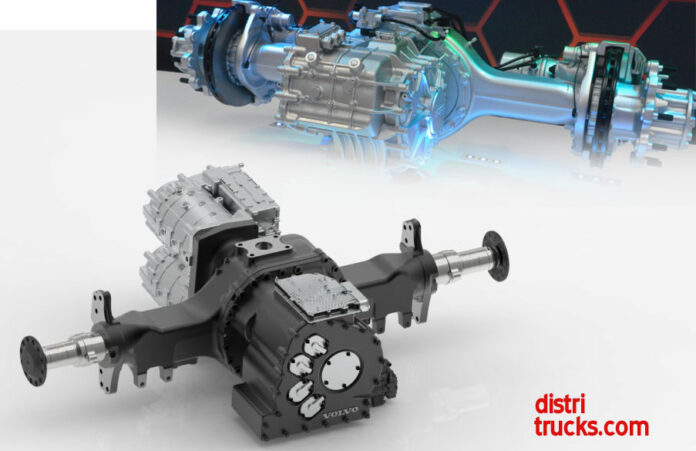The development of electrically powered semi-trailer tractors is developing rapidly. Not only are more and more brands with electric tractors coming onto the market, but these tractors are also getting an increasingly greater range. It is also becoming clear that the traditional design of the vehicle is being drastically modified.
At the IAA Transportation truck fair, various exhibitors (both truck manufacturers and suppliers) showed electrically powered axles. These are already being used on some truck models. The drive motor is on the drive axle, and no longer under the cabin. This means that there is more space for batteries on the chassis – and the range is therefore considerably higher.
Three years ago, 200 to 300 km range was approximately the maximum for an electric tractor. You can now buy trucks that can travel 600 km without recharging. Partly due to better batteries and partly due to more batteries on the chassis. The 600 km is considered a magic number, because you could drive a thousand kilometres in one day with one charge. In other words, these e-trucks are then suitable for long-distance transport.
Using an e-axle means you can add more batteries to the truck frame. But a lot of batteries is not always the smartest solution.
Disadvantage: such long-distance e-trucks are much heavier than a normal truck. A “traditional e-tractor” (if you can call it traditional of course) weighs 10 tonnes ex works, while a diesel tractor weighs only 7 to 8 tonnes. If you move the drive motor to the rear axle, the weight distribution changes. This is then compensated for by mounting the battery at the front, but such an e-truck will weigh even more: 11 or perhaps even 12 tonnes. And the more its own weight, the less heavy the trailer may be.
The 4×2 diesel tractor can have a load of approximately 12 tonnes on the fifth wheel. For the electric 4×2 tractors currently on the market, this is much less: approximately 9 tonnes. For those transporting furniture or kitchen rolls, this does not matter. If you transport pallets with beer, steel profiles or other heavy goods, you will not have enough loading capacity.
It is up to the truck manufacturers to find solutions to this dilemma. This can be done, for example, with a mid-lift axle, which (roughly calculated) adds 3 tonnes of extra load capacity. But of course the truck itself becomes heavier. An extreme example is the Tesla Semi, with two double-air rear axles and thick battery packs. This does give you an even greater range (up to 1000 km), but it is virtually impossible to put together a combination within the EU that meets maximum weights and dimensions.
It is a search for an optimal balance between battery capacity and axle configuration. But that is not all. Jan Schouten, manager energy transition Volvo Trucks Nederland (market leader in sales of electric trucks): “If you want to travel long distances with an e-truck, adding more and more batteries won’t be the magic trick. You have to carry all that weight around and at some point that is no longer profitable. For a successful solution, you also have to take the trip planning into account. Where do I charge, and with whom? And at what time during my journey. Successfully electrifying your fleet means a package of measures throughout your company.”





